West Chiltington, Sussex (†Chichester) c. 1250-1275
Passion Cycle
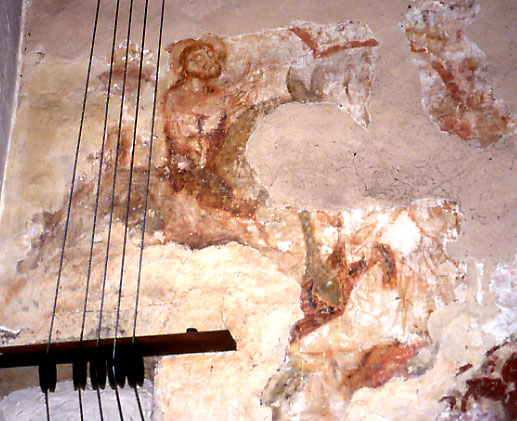
One of the earliest English Passion Cycles, and one of the most accomplished, not merely in terms of technical mastery, but also in the immediacy of its emotional impact. Reading from the west end of the nave, the first, damaged, scene, the Entry into Jerusalem, has Christ, right arm extended forwards, riding in particularly majestic fashion into the city on what was once a very elegantly drawn donkey. Christ’s severe, almost arrogant, features are typical of the large-eyed, stern expressions of all the figures in the cycle, where the mingling of Byzantine and native Anglo-Saxon styles is perhaps more noticeable than anywhere else in the English parish church. Confused remains of people spreading garments fill the right-hand part of the scene.
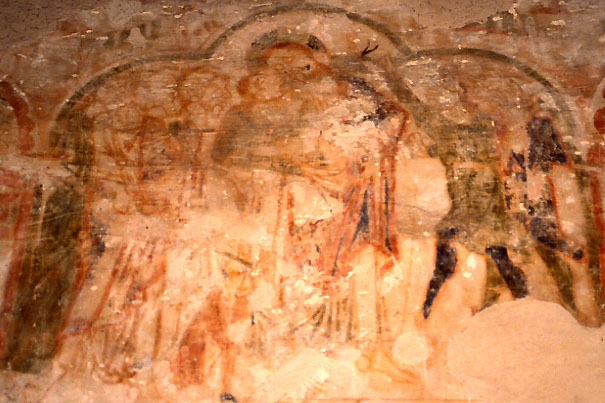
The next two scenes, the Last Supper and the Washing of Feet are now very fragmentary, but following them the Betrayal and Arrest (below right) is clearer. In the centre of the scene, Christ, head inclined to the right (onlooker’s viewpoint), is embraced and kissed by Judas, a smaller figure on the left. Further to the left is a group of disciples, the profile of the one nearest the centre faint but reasonably clear. A disciple nearer the left-hand edge is Peter, and although the detail is very unclear now, his sword slants downwards to the right across the scene to meet the head of Malchus, a tiny figure crouching at the bottom of the scene and most readily located by the small patch of blue-grey at the lower edge that is his shoe. At the right of the scene, clearer, are two (three originally) men in short robes, the one nearest the centre in green and reaching out to seize Christ.
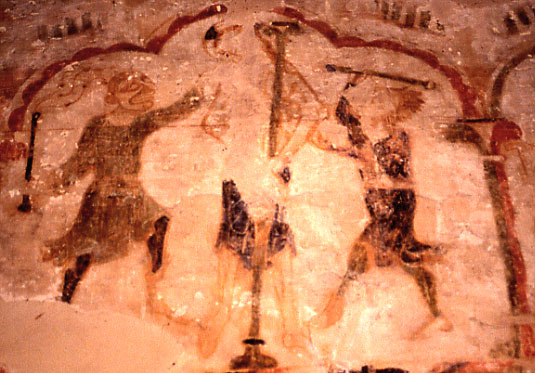
The facial features of these men have effectively disappeared now, but they were once as exaggeratedly villainous as others, fortunately clearer, later in the cycle. Most remarkable of all are those of the man on the left, wielding a cat-o’-nine-tails in the Flagellation (left). The other torturer, opposite him in the scene, has the shock of wild hair often found on tormentors of Christ and the saints, and the sense of almost maniacal energy in this scene is very marked.
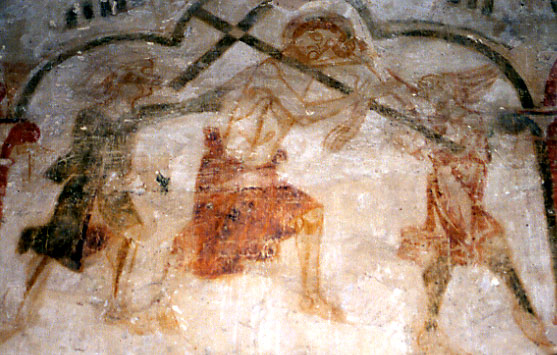
Wild hair and grotesque features occur again in the next scene, the Road to Calvary (below, scroll right), and Christ, carrying the slim Cross in the centre between two more torturers who push and pull at him, again has the large eyes and severely downturned mouth of the first scene. The sense of painful, forced, progress is vividly conveyed.
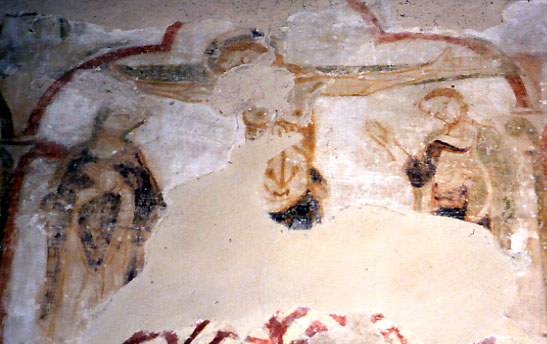
Next and shown below at the left comes the Crucifixion, sadly damaged in its centre but showing the same idiosyncratic arrow-shaped delineation of abdominal muscle as the preceding scene. The sinewy musculature of Christ’s arms also shows well. Mary and John flank him to left and right respectively.
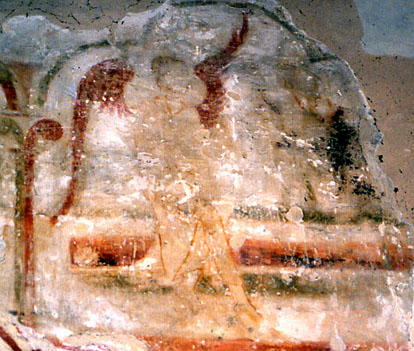
After this in the horizontal sequence and shown below at the left is a scene of the Angel at the tomb, very faint and damaged but showing a red winged angel, and, at the right, another very faint figure who is probably Mary Magdalene. Christ is already risen, and he stands, holding the Vexillum in a very faded scene of the Resurrection (below, right) painted in the spandrel directly below the scene of the Road to Calvary.
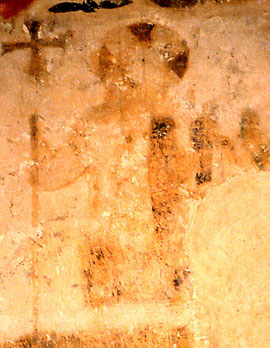
Even further below in this spandrel are some faint pigmented marks showing that something else was once painted here. It might have been the Harrowing of Hell.
All the 13th century paintings dealing with narrative scenes at West Chiltington are framed within the round triple arches and slender pillars visible here. Despite the extensive damage, the Passion Cycle is a fine example of an early treatment of this subject, particularly noteworthy for its handling of physiognomy and facial expression.
There are other paintings here; one of them, a 15th century Warning to Sabbath Breakers, is already on the site. Others, including a 13th century sequence of the Life of the Virgin/Nativity, are earlier, and they will be here soon.
Website for St Mary’s church, West Chiltington